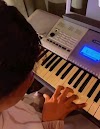# There's Nothing Like Sheet Music 😡😡😡
Sheet music? Overrated. In an age of digital everything, why bother with those cryptic black dots and lines? The notion that you need sheet music to become a great musician is outdated and limiting. But wait—let’s delve deeper before dismissing it entirely.
#### The Argument Against Sheet Music
1. **Creativity Constraint:** Relying solely on sheet music can stifle creativity. It’s like painting by numbers—technically accurate, but devoid of personal expression. True musicianship comes from feeling the music, not just reading it.
2. **Time-Consuming:** Learning to read sheet music takes a considerable amount of time. In a world where immediate gratification is the norm, many aspiring musicians might feel discouraged and give up before they even get started.
3. **Overemphasis on Perfection:** Sheet music often creates an unhealthy focus on playing pieces perfectly, note for note. This can lead to performance anxiety and a fear of making mistakes, which is counterproductive to the learning process.
4. **Accessibility:** Not everyone has access to formal music education where sheet music is taught. Many successful musicians have never learned to read music and rely on their ear and intuition to create and perform.
But wait—before you throw your sheet music into the recycling bin, consider its undeniable benefits.
#### The Importance of Sheet Music
1. **Universal Language:** Sheet music is the universal language of musicians. It allows players from different backgrounds to communicate and collaborate seamlessly, regardless of their native tongue.
2. **Historical Preservation:** Many of the greatest musical works in history are preserved in sheet music. It’s the primary way we can study, perform, and appreciate the masterpieces of composers like Bach, Beethoven, and Mozart.
3. **Learning Tool:** For beginners, sheet music provides a structured way to understand the fundamentals of music theory, rhythm, and harmony. It’s an essential tool for developing comprehensive musical skills.
4. **Professional Necessity:** For many professional musicians, especially those in classical, jazz, and orchestral settings, reading sheet music is a non-negotiable skill. It’s crucial for learning new pieces, sight-reading, and performing in ensembles.
#### Steps to Learning Sheet Music for Beginners
1. **Learn the Basics:** Start with the musical alphabet (A-G) and the staff (five lines and four spaces). Each line and space represents a different note.
2. **Understand the Clefs:** The treble clef (G clef) and bass clef (F clef) are the most common. The treble clef is usually for higher-pitched notes, and the bass clef for lower-pitched notes.
3. **Note Values and Rhythms:** Learn the different note values (whole, half, quarter, eighth, etc.) and corresponding rests. This will help you understand the timing and rhythm of the music.
4. **Key Signatures:** Key signatures tell you which notes are sharp or flat throughout the piece. Familiarize yourself with common key signatures and their corresponding scales.
5. **Practice Regularly:** Start with simple pieces and gradually progress to more complex ones. Consistent practice is key to becoming proficient in reading sheet music.
#### A Basic Tutorial for Total Novices
1. **Identify the Staff:** The staff consists of five lines and four spaces. Notes can be placed on either lines or spaces.
2. **Learn the Treble Clef Notes:** The lines from bottom to top are E, G, B, D, F (Every Good Boy Deserves Fudge), and the spaces are F, A, C, E (FACE).
3. **Learn the Bass Clef Notes:** The lines from bottom to top are G, B, D, F, A (Good Boys Do Fine Always), and the spaces are A, C, E, G (All Cows Eat Grass).
4. **Note Durations:** Whole notes (4 beats), half notes (2 beats), quarter notes (1 beat), and so on. Rests have equivalent values and indicate silence for the corresponding duration.
5. **Hands-On Practice:** Use a beginner’s piano book or an online resource to practice reading and playing simple melodies. Websites like musictheory.net offer interactive tutorials and exercises.
### Conclusion
While the argument against sheet music highlights valid points about creativity and accessibility, the benefits of learning to read music are undeniable.share this post.










0 Comments